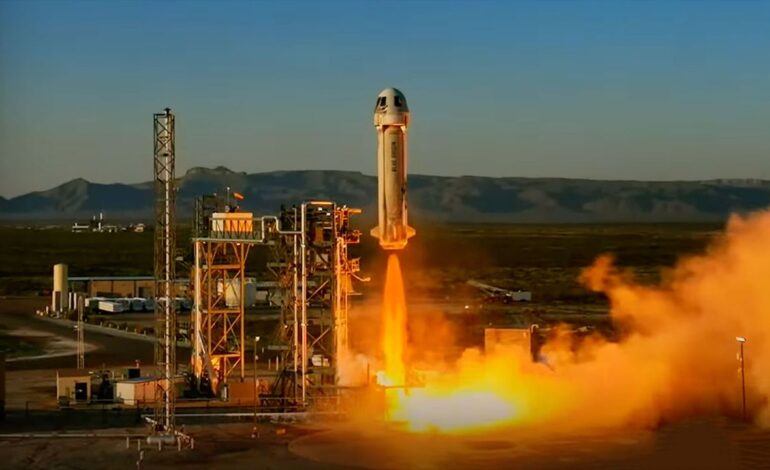Blue Origin Launches 200th Payload on 35th New Shepard Flight

Blue Origin successfully launched its 35th New Shepard mission on August 23, 2023, marking a significant milestone by sending its 200th payload into space. The uncrewed suborbital flight, designated NS-35, lifted off at 8:30 a.m. EDT from Blue Origin’s Launch Site One in West Texas. This mission included a range of experiments and research projects designed by students, educators, and university teams, showcasing the company’s commitment to educational outreach and scientific advancement.
Innovative Experiments and Collaborations
Among the payloads aboard the NS-35 flight were two dozen experiments selected through the NASA and Future Engineers’ TechRise Student Challenge. These studies aimed to explore various scientific phenomena, including plant cultivation in microgravity, liquid physics, and medical research. The participation of educational institutions in this mission reflects Blue Origin’s ongoing support for STEM (Science, Technology, Engineering, and Mathematics) initiatives.
The flight also featured investigations developed by educators participating in the Teachers in Space program. Their experiments focused on measuring sound levels, radiation exposure, and environmental conditions within the capsule during flight. Notable contributors included the Johns Hopkins Applied Physics Laboratory, Oklahoma State University, the University of Florida, and the University of Central Florida.
Carthage College in Wisconsin utilized this opportunity to test innovative methods for gauging propellant levels in space. Additionally, a payload from Teledyne, in collaboration with NASA’s Glenn Research Center, investigated a spacecraft fuel cell system that could potentially support missions to the Moon and Mars.
Technical Achievements and Future Implications
The NS-35 mission is significant not only for its educational payloads but also for its technical advancements. A total of 432 sensors were deployed to record the effects of a novel chemical coating, while a modified FLEX fluorescence imaging system, previously utilized on the International Space Station, embarked on its first suborbital journey.
Blue Origin’s H.G. Wells capsule, dedicated solely to carrying cargo rather than crew members, successfully completed its fifth flight during this mission. The capsule and its booster were designed for recovery, with the booster set to perform a propulsive landing on a concrete pad near the launch site, while the capsule descended back to Earth using parachutes.
In line with its commitment to inspiring future generations, Blue Origin also facilitated the collection of postcards for its not-for-profit organization, Club For the Future. These postcards, decorated by students, were stamped post-flight to signify their journey into space and returned to the creators.
As the 21st New Shepard cargo mission, NS-35 underscores Blue Origin’s role in the evolving landscape of commercial spaceflight. With a focus on scientific research, technological innovation, and educational engagement, the company continues to pave the way for future explorations and advancements in space technology.






